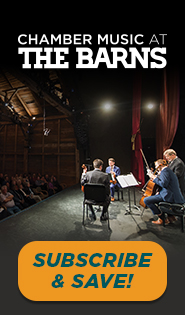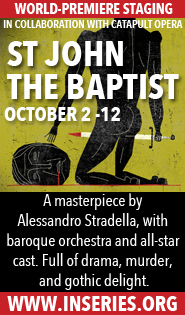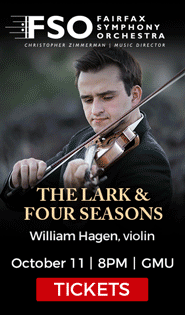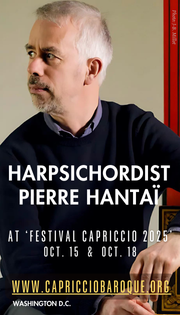Hantaï delivers a cerebral “Goldberg Variations” for Festival Capriccio

Pierre Hantaï performed at Festival Capriccio Thursday night. Photo: CB
At the heart of Festival Capriccio, the new harpsichord celebration from Capriccio Baroque, was Pierre Hantaï’s performance of J.S. Bach’s Goldberg Variations. Heard in the darkened Church of the Epiphany Thursday night, this performance felt solemn and hieratic, with a few electric candles flickering in front of the harpsichord. Hantaï’s musical choices thankfully lightened that heavy impression.
The French harpsichordist opened with a slate of musical appetizers, intended to warm up the instrument and let the audience settle down. These pieces summed up some of the possible influences on Bach’s keyboard style and offered comparisons to the musical structure of Bach’s more famous masterpiece.
Hantaï used the Prelude in D Minor, from Jean-Henry d’Anglebert’s Pièces de Clavecin as a sort of semi-improvised introduction. Written in a non-measured style, the music flowed freely from Hantaï’s hands. A larger registration gave François Couperin’s “La Flore,” a character piece from the 5e Ordre, a broad, almost folksy charm. Hantaï’s touch at the keyboard, while not without some minor misses throughout the evening, always impressed with its careful phrasing.
A free rhythmic approach also marked the “Prelude” of Handel’s Keyboard Suite No. 5, followed by a tender Allemande and spritely Courante. The final movement, the Aria and Variations sometimes known as “The Harmonious Blacksmith,” demonstrated just how monumental and different Bach’s massive Goldberg Variations are. Hantaï took advantage of the double-manual Colin Booth harpsichord to add some sparkling echo effects in Handel’s virtuosic variations.
Three more French selections filled out the menu, beginning with the heavily ornamented Sarabande from Rameau’s Suite in A Minor, a reminder that the Aria of Bach’s Goldberg Variations is also a Sarabande. Next Hantaï interpolated Rameau’s swirling rondeau “Les Tourbillons,” not listed in the program, as an example of the sort of windy flourishes Bach summons toward the end of the Goldberg. Finally, Antoine Forqueray’s chaconne “La Morangis,” with its extravagant harmonic tangents, drew comparison with the repeating bass line of Bach’s variations.
After a brief intermission came the main course, prefaced with one more amuse-bouche, a keyboard arrangement of the brief chorale “Auf meinen Lieben Gott,” the last movement of Bach’s Cantata No. 188 (Ich habe meine Zuversicht). With its conclusion on a G major chord, a reminder of the chorale’s hopeful text about trust in God, the piece set the stage for Bach’s famous Aria.
Hantaï kept the Goldberg Variations from over-extending the evening by sometimes not repeating one section or the other of each movement, and sometimes neither. He also generally avoided extremes of tempo, keeping in focus the minute details of the more virtuosic variations at the end of the piece and not dragging out the slow movements in the parallel minor, like Variation 25.
Hantaï often played the variations in canon, placed by Bach every third movement, in more deliberate tempos. The care taken with the imitative entries, ordered from a canon at the unison up by step to a canon at the ninth, proved a treat for the ear. In the canons, as with other movements, different registrations on the two manuals often brought out the contrapuntal patterns even more.
In the genre pieces that followed the canons, Hantaï took care to differentiate each one with a specific character: the jaunty gigue of Variation 7, the sparkly trills in Variation 10’s fughetta, and especially the panache of the French Ouverture’s scalar flourishes in Variation 16.
After the genre pieces, in Bach’s triple pattern that stood out more in this interpretation, came flashier toccata-like variations, which harpsichordist Ralph Kirkpatrick dubbed “arabesques.” Hand crossings, zany trills, and precise fingerwork all featured brilliantly in Hantaï’s playing. More echo effects and staccato articulation enlivened Variation 23, as well as a metrically taut handling of the alternating chords in Variation 29.
If the concluding Quodlibet of Variation 30 and the return of the Aria felt a little anticlimactic in this performance, Hantaï offered a barn-burner of an encore. Thunderbolts and rumbling menace abounded in Antoine Forqueray’s “Jupiter,” from the Cinquième Suite, a fitting end to this virtuosic program.
Pierre Hantaï plays music of Handel and Domenico Scarlatti 8 p.m. November 8 at La Maison Française. capricciobaroque.org



